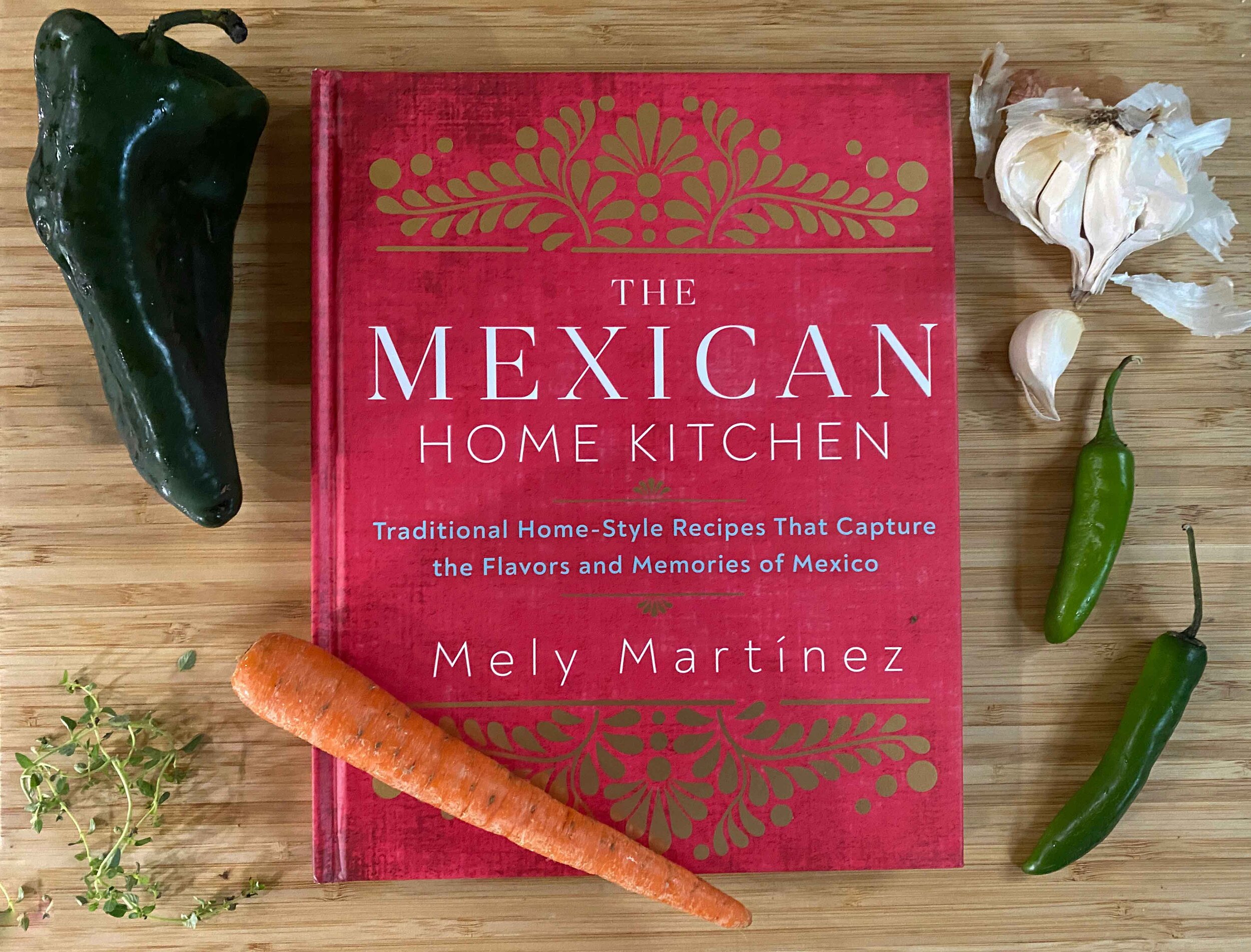Mely Martínez with epazote she grew in her garden in Frisco, Texas. Her debut cookbook, ‘The Mexican Home Kitchen’ was published Sept. 15, 2020. | Photo by David Castañeda
We are excited to announce that Cooks Without Borders and The Dallas Morning News will be co-hosting a virtual book party to celebrate the publication of The Mexican Home Kitchen, Mely Martínez’s debut cookbook.
Mely is the blogger behind Mexico in My Kitchen; we reviewed her book last week.
The party will be Thursday, Sept. 24 from 5 to 6 p.m. Central Time, as part of The Dallas Morning News DMN Download series. Please join Mely, Dallas Morning News Food Editor Erin Booke and me to talk about Mexican cooking and Mely’s book. We’ll leave plenty of time for a Q&A, so be sure to bring your questions!
Just before the event, be sure to make Mely’s Fresh Salsa Rosa and mix her favorite cocktail, a Tequila Sunrise, so we can party in style together and raise a glass to the author. Oh, and there will be prizes! We’ll be giving away two copies of the cookbook signed by Mely, as well as a molcajete and a cazuela from Ancient Cookware.
This traditional molcajete will be one of the giveways, care of Ancient Cookware, during the virtual book party for Mely Martínez and her new cookbook, ‘The Mexican Home Kitchen.’
Hope you had a fantastic Mexican Independence Day, and we look forward to hanging with you on the 24th!








